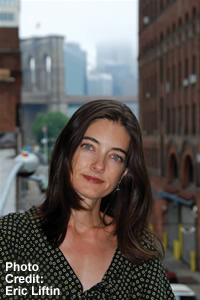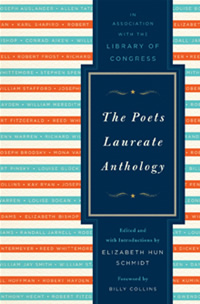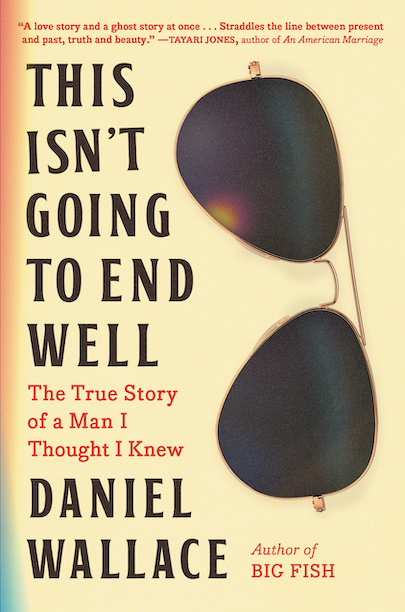Crowned with Laurel
Elizabeth Hun Schmidt’s new anthology of work by America’s poets laureate is a treasure
American readers tend to be confused about what it means to be the Poet Laureate of the United States. “It’s a strange title,” admits Mona Van Duyn (laureate 1992-3). “All the public knows is England’s long, long tradition of having a poet laureate, with each staying in the post until he dies. Whereas we, in our weird American way, have a new laureate every year.” As Howard Nemerov (laureate 1963-1964 and again 1988-1990) once quipped, the poet laureate would do well “to devote his tenure to explaining to others what exactly it is that the poet laureate does.” Fortunately for future laureates, The Poets Laureate Anthology, brilliantly edited by Elizabeth Hun Schmidt, clarifies the role of the nation’s poet on retainer and simultaneously provides examples of the best work of poets tapped for the job.
Any confusion is understandable because in our weird American way, we were also unable to decide quite what to call the position (before 1986, the office was known as the “Consultantship in Poetry”; the official title now is actually “Poet Laureate Consultant in Poetry”), whether the job comes with term limits (Reed Whittemore, Robert Penn Warren, Howard Nemerov, and Stanley Kunitz all held the position twice, while others have served for multiple consecutive years) or even what, exactly, the laureate/consultant should do while wreathed. Unlike, say, the president, our poet laureate need not have been born on native soil: Joseph Brodsky (so far the only laureate also crowned with a Nobel) was Russian by birth; Josephine Jacobson was Canadian, and Charles Simic is a native Yugoslavian. Unlike the British laureate, the U.S. version is not required to compose ceremonial odes with prescribed themes. In fact, as Billy Collins (laureate 2001-2003 and 2010 Nashville Public Library Foundation Prizewinner) notes in his charming foreword to The Poets Laureate Anthology, the title “is an honor conferred without ceremony or ritual of investiture”—although, he adds, “you do get a very nice office” in the Jefferson Building overlooking the Capitol in Washington, D. C., where photos of previous laureates “stare down at you … with expressions ranging from dim recognition to disbelief. There must be some mistake, Robert Penn Warren seemed to be saying. Surely, not him, Robert Frost seethed.”
 The tabula rasa of the laureateship has lent itself to fascinating and varied interpretations of the office. As Schmidt’s lively introductions to each poet’s excerpted oeuvre attest, the laureates themselves were a wildly diverse bunch. Some, like Maxine Kumin, Joseph Brodsky, Robert Hass, Robert Pinsky, Rita Dove, and Billy Collins (whose Poetry 180 program aimed to expose high school students to one new poem per school day all year long, in the hope that an appreciation for poetry could be “caught” through repeated exposure) embraced the role of public servant, devoting their tenure to the promotion (which, in a poetry-phobic culture, almost inevitably means popularization) of the poetic art. Others used the office as a bully pulpit to keep funding for the arts from evaporating. Still others all but repudiated the public aspect of laureateship, choosing to wear their laurels ceremonially, or hardly at all. Louise Glück had “no concern with widening audience,” preferring a readership that is “small, intense, passionate.” Some had fun: Louise Bogan remarked that “the work at the Library is delightful: I have an assistant who treats me like a Mandarin.” Others did not: Mona Van Duyn, at the end of her tenure, said she’d “run kicking and screaming in the opposite direction” if asked to serve a second term. Certain poets seemed to value the physical office more than the title itself; rumor has it that Robert Penn Warren (who was an undergraduate at Vanderbilt during the Fugitive years) holed up in the Jefferson Building to write—not verse, but All the King’s Men. Nearly everyone kept his or her day job; as Schmidt wryly notes, “not even a poet can eke out a living on the laureate’s stipend.”
The tabula rasa of the laureateship has lent itself to fascinating and varied interpretations of the office. As Schmidt’s lively introductions to each poet’s excerpted oeuvre attest, the laureates themselves were a wildly diverse bunch. Some, like Maxine Kumin, Joseph Brodsky, Robert Hass, Robert Pinsky, Rita Dove, and Billy Collins (whose Poetry 180 program aimed to expose high school students to one new poem per school day all year long, in the hope that an appreciation for poetry could be “caught” through repeated exposure) embraced the role of public servant, devoting their tenure to the promotion (which, in a poetry-phobic culture, almost inevitably means popularization) of the poetic art. Others used the office as a bully pulpit to keep funding for the arts from evaporating. Still others all but repudiated the public aspect of laureateship, choosing to wear their laurels ceremonially, or hardly at all. Louise Glück had “no concern with widening audience,” preferring a readership that is “small, intense, passionate.” Some had fun: Louise Bogan remarked that “the work at the Library is delightful: I have an assistant who treats me like a Mandarin.” Others did not: Mona Van Duyn, at the end of her tenure, said she’d “run kicking and screaming in the opposite direction” if asked to serve a second term. Certain poets seemed to value the physical office more than the title itself; rumor has it that Robert Penn Warren (who was an undergraduate at Vanderbilt during the Fugitive years) holed up in the Jefferson Building to write—not verse, but All the King’s Men. Nearly everyone kept his or her day job; as Schmidt wryly notes, “not even a poet can eke out a living on the laureate’s stipend.”
Such diversity of personality and purpose makes this volume a collection of stunning richness; Schmidt’s well crafted, meticulous survey-in-reverse (the book begins with W. S. Merwin, the present poet laureate, and runs backwards to Joseph Auslander, who became Consultant in Poetry in 1937) includes, as it must, many of American poetry’s Big Names (Robert Frost, Vanderbilt graduate James Dickey, Elizabeth Bishop, William Carlos Williams, Nashville native Randall Jarrell, Vanderbilt professor Allen Tate, and Donald Hall, to name but a few). Yet the book also contains many happy surprises, even for poetry aficionados. Given that Schmidt had no choice in deciding which poets to include, her curatorial skill in selecting the poems themselves seems even more remarkable. She is, of course, honor-bound to include some poems which are, through no fault of their creators, eye-rollingly overanthologized (Bishop’s “One Art,” Tate’s “Ode to the Confederate Dead,” Williams’s “The Red Wheelbarrow,” Frost’s—well, nearly everything by Frost). Yet she makes sure to place these well-polished gems in the company of less-typically-read exemplars, always with an eye toward showcasing unfamiliar aspects of a poet we mistakenly believed we knew.
 When introducing less well-known poets, Schmidt is at her very best: it will be a joy for many readers to discover the Nebraskan Ted Kooser, laureate 2004-2006, who “worked as an executive at an insurance company where his secretary was often the first reader of his poems. If she didn’t understand them, he would revise.” With Schmidt as expert guide, readers will also discover Kay Ryan’s “poetics of play,” Mona Van Duyn’s elaborations on love and marriage, ranging “from the scathing to the optimistic,” Reed Whittemore’s “critical poems on the banality and materialism of American culture,” Louis Untermeyer’s “good cheer and tireless promotion of others’ poetry,” and Louise Bogan’s “ample proof that economy of line can convey abundance of emotion.”
When introducing less well-known poets, Schmidt is at her very best: it will be a joy for many readers to discover the Nebraskan Ted Kooser, laureate 2004-2006, who “worked as an executive at an insurance company where his secretary was often the first reader of his poems. If she didn’t understand them, he would revise.” With Schmidt as expert guide, readers will also discover Kay Ryan’s “poetics of play,” Mona Van Duyn’s elaborations on love and marriage, ranging “from the scathing to the optimistic,” Reed Whittemore’s “critical poems on the banality and materialism of American culture,” Louis Untermeyer’s “good cheer and tireless promotion of others’ poetry,” and Louise Bogan’s “ample proof that economy of line can convey abundance of emotion.”
In every one of her introductions, Schmidt comes across as learned and well-read without being the slightest bit pretentious; time and again, she strikes the perfect note of poetic passion and scholarly detachment. She does not lead her readers by the hand, but carefully nudges them on the path toward revelation. With admirable economy, she manages to combine biography, a few carefully chosen quotes (from letters, essays, interviews, or the laureate speeches themselves), and a deft assessment of each poet’s particular sensibility, both literary and personal. In short, she’s an ideal instructor, providing her readers with the keys they need to make the most of what they’re about to read, but allowing them all the fun of unlocking the doors and treasure chests themselves. By ensuring that the best work of our country’s officially sanctioned poets can be easily located, easily studied, and easily read, Schmidt has done American letters a tremendous service. The Poets Laureate Anthology is a life-changing book.


